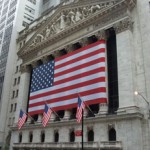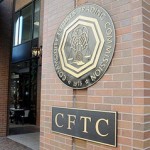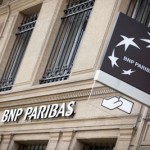Levine on Wall Street: Revenue Models

Is Uber’s valuation reasonable?
Aswath Damodaran thinks no, Andrew Ross Sorkin thinks yes, but two data points from Henry Blodget that may or may not be true are that its revenue (1) is now $2 billion a year and (2) is doubling every six months. So extrapolate from there and … hmm … I get Uber’s revenue exceeding U.S. GDP by the end of 2020, and world GDP by the end of 2022. (Paul Kedrosky has different math.) Meanwhile every attempt to kill it only makes it stronger. So, sure, feels like a Conviction Buy, what could possibly etc. Elsewhere in valuation news, how often do analysts have a price target of zero? The answer is not never! And is there a Millennial M&A panic? I don’t know, I panicked a little just typing those words.
Did you know that the Justice Department gets a 3 percent commission on the fines it collects?
This is true, and a little boggling. A plausible model of the Justice Department, based solely on that fact, would be:
- That it would push to maximize fines, and be willing to trade off other enforcement tools (guilty pleas, individual prosecutions) to get bigger fines against banks, and
- That it would leverage some of the commissions it gets to hire more prosecutors to pursue more, even bigger fines.
- That model turns out to be completely accurate, good times.
How useful are stress tests?
Not very, for the banks, says David Little at Moody’s Analytics:
The Fed wants stress tests to influence the way banks go about day-to-day business, said Little, who has hosted roundtables of bankers and regulators to discuss the stress test. But that is not yet happening because banks are ill-equipped to collect and analyze data across their businesses in the way the Fed requires.
As a result, regulatory stress tests take three or four months to conduct, compared with just a day to run an internal test on the way a currency fluctuation or interest rate move would affect profits, Little said.
Okay so! That is the point! The point is:
- The Fed is like “what would happen to you if [variable] did [something]?”
- You’re like “I don’t know, I don’t have integrated systems to test that across the firm.”
- The Fed is like “EXACTLY.”
Go build the systems! That’s what the stress test is telling you! The stress test is telling you, you don’t have the right systems to run a bank! Come on.
Will BNP Paribas be forced to fire the compliance officer who let it repeatedly violate U.S. law?
New York regulator Ben Lawsky wants BNP to fire this guy:
Mr. Levy-Garboua, who joined a BNP predecessor in 1980 and is believed to be in his mid-60s, was in charge of compliance in North America from 2005 to 2008, a period during which BNP allegedly conducted transactions with Sudan, Iran and other countries subject to U.S. sanctions.
So, I mean, what is the argument for not firing him? You can make a good case that BNP shouldn’t be penalized so drastically for doing stuff that was legal in France but illegal in the U.S., but this guy was in charge of North American compliance. He seems to have … failed?Maybe French labor law makes it hard for BNP to fire him, so it’s like when U.S. prosecutors demanded client names that Credit Suisse couldn’t give them under Swiss law: Either you obey your domestic law, or you obey U.S. prosecutors. Meanwhile, the delightfully named Georges Chodron de Courcel was also a target, and will retire this year; the deal that BNP seems to have worked out is that he will leave but BNP will pretend that it has nothing to do with the sanctions investigation.
What is the loan-to-value ratio of a fraudulent Chinese metal warehouse financing trade?
I don’t get it:
Last Friday, Qingdao Port International, the biggest port operator in the Chinese city, announced that the authorities had begun investigating a suspected fraud related to the aluminum and copper stored in its warehouses. … The report said Qingdao Decheng was suspected by the authorities of having pledged the same stocks of the metals — about 100,000 tons of aluminum and 2,000 to 3,000 tons of copper — as collateral for multiple loans, amassing bank debt exceeding 1 billion renminbi, or $160 million.
Okay but 100,000 tons of aluminum and 2,000 tons of copper would be worth about $200 million. So everyone’s still 25 percent overcollateralized. Or something? The message here is perhaps that no one has any idea what’s going on in Qingdao.
What’s up with the sausage merger?
As I suspected, Pinnacle Foods is trying to hold up Hillshire Brands for more money to walk away from a Hillshire/Pinnacle deal and take a Tyson/Hillshire deal. Also Tyson served up an unsigned merger agreement to tempt Hillshire; from this URL it looks like Tyson’s codename for the deal was “Hobbit.”
Things happen.
Chekhov on data. Gorman’s charts. Doubts about smart beta. Doubts about the sharing economy. Apollo doesn’t want retail money. Dan Loeb and Sotheby’s are friends again. The debt ceiling is a thing again; stay tuned for another post on premium bonds in like six months. “Insider information.” Burrito bonds. “The same problems that plague the country are dooming bike sharing.” The Eritrean national soccer team keeps defecting. “Goalscorer Fred promises no more goalscoring promises.”
Author: Matt Levine is a Bloomberg View columnist writing about Wall Street and the financial world. He is a former investment banker, mergers and acquisitions lawyer, and high school Latin teacher.
Source: bloomberg





























